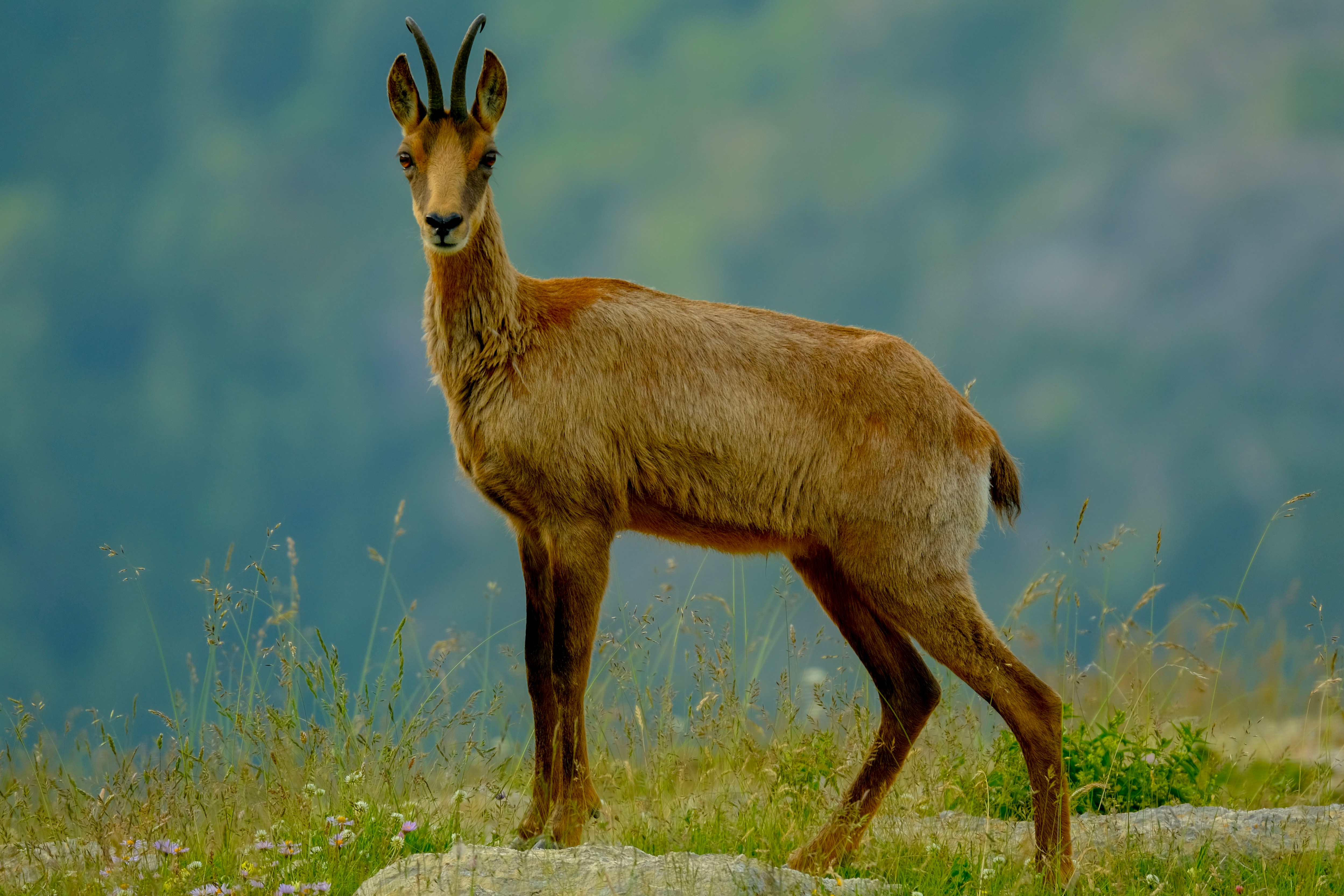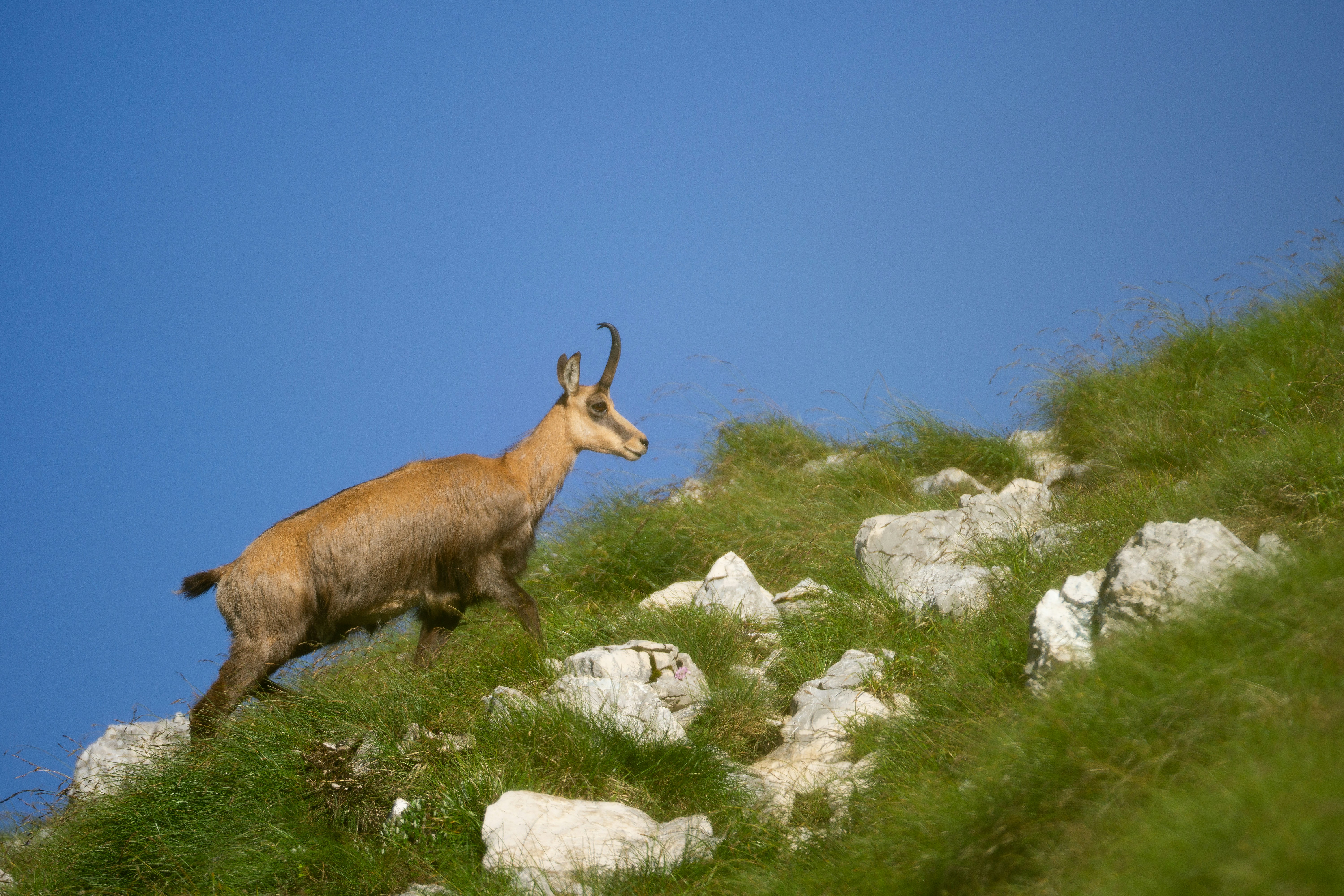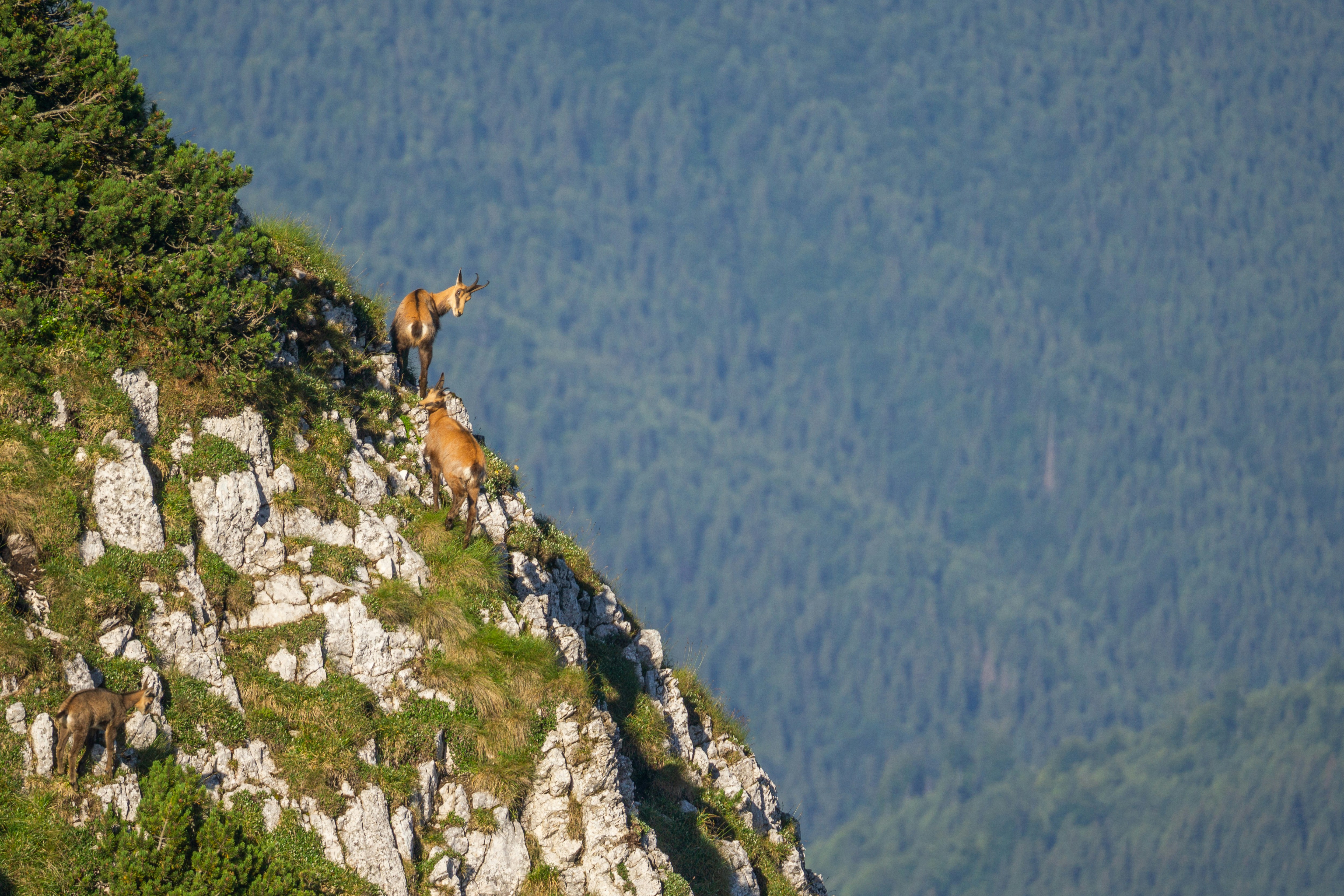The Chamois, At Home in the Heights

By Jose Luis Gallego, environmental communicator (@ecogallego)
The highest peaks of our mountain ranges are home to one of the Iberian fauna’s most elegant and graceful wild bovids: the chamois, also known by its scientific name Rupicapra rupicapra.
Smaller and far slimmer in build than the mountain goat, the chamois has a toasted brown coat, slightly darker on the legs and chest, which grows longer and thicker during the cold season. The animal’s elongated, slender neck supports a surprisingly small head with white and dark brown face markings from the ears to the mouth and around the eyes, giving the chamois its distinctive spectacled look.

A chamois in its natural habitat
The small horns are another distinctive trait of the chamois: short and narrow, they resemble backward-facing hooks. Light and agile, the male chamois is about a metre tall at the shoulder and weighs around 22 kilos. Females are slightly smaller.
Fully adapted to life in the high mountains, chamois usually make their home amid boulders, rocky outcrops, and alpine meadows surrounded by woodland. However, it isn’t unusual to spot them at the highest elevations, even above 2000 metres, making them one of the few wild mammals to inhabit the steepest summits and snowcapped peaks.
If we stumble across them in the mountains, they will most likely scamper away. What is astonishing to observe is how quickly these surefooted animals ascend the sheer rockface, leaping from boulder to boulder with nothing but a vertiginous drop below. Or they might race down gorges covered in ice and snow without a single misstep. This is thanks to their powerful muscles, highly evolved sense of balance, and the anatomy of their feet, which are perfectly designed for walking, running, and jumping on the steepest, rockiest terrain.
Chamois are gregarious, social animals that usually live in small herds, although these can reach impressive numbers – up to 100 individuals – in some areas of the Pyrenees where populations are particularly abundant.

A chamois wandering around the mountain
Chamois tend to spend the summers at the highest elevations, far from any contact with humans. Once the winter sets in, and temperatures drop below zero, the herds leave the snow and ice-covered peaks for the valleys below to ensure a steady food supply.
An exclusively vegetarian species, chamois feed on grass, leaves, lichen, wild berries and fruit. They are very fond of salt, which is why we can often spot them in areas where cattle breeders deposit a supply of the tasty substance for the animals they leave in the mountains.
As for predators, chamois must contend with wolves, which usually hunt sick or older individuals, and the golden eagle, which preys on calves. Far more fearsome for the chamois, however, is the mountain hunter, because these graceful creatures are a coveted trophy, and thousands of hunting licences for the species are issued every year.
That said, the biggest threat to the species is undoubtedly infectious disease, such as the severe outbreak of pestivirus that hit the Iberian Peninsula during the early 2000.

A pair of chamois on a mountaintop
Considered a distant variant of the classic swine flu, this viral infection only and exclusively affects wild chamois populations, altering their immune system to the point of stripping the animal of essentially all defences. In the Pyrenees, the extent of the contagion was such that chamois populations were cut in half in less than a year, reducing their area of distribution so drastically, they seemed at risk of extinction.
Fortunately, the species managed to adapt to the situation and develop an immune response to the virus, thereby allowing populations to recover. These days, despite having to face several additional epidemics, this beautiful high-mountain dweller is no longer considered in danger.
